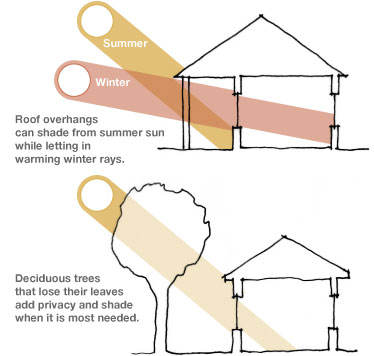
Empower
Making one’s own decisions; reclaiming the autonomy and dignity eroded by abuse
Assess the neighborhood’s ability to support residents’ regaining independence, economic opportunities, and social connections.
When building a new shelter or assessing an existing building as a potential shelter, consider the following: will residents be able to easily access public transportation? Groceries? Health care? Educational and recreational facilities? Is the area pedestrian and/or bicycle friendly? Will the neighborhood feel safe, particularly to women walking with children? Will residents be able to access resources nearby? If not, can the site provide enough space to accommodate bringing resources in?
When building a new shelter or assessing an existing building as a potential shelter, consider the following: will residents be able to easily access public transportation? Groceries? Health care? Educational and recreational facilities? Is the area pedestrian and/or bicycle friendly? Will the neighborhood feel safe, particularly to women walking with children? Will residents be able to access resources nearby? If not, can the site provide enough space to accommodate bringing resources in?
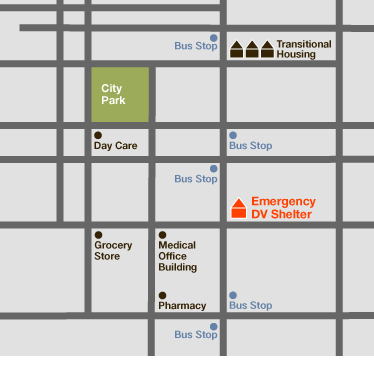
![Feeling A Part Of A Community “Feeling a part of a community… is a wonderful way to heal [especially for kids]”; being integrated into a neighborhood helps 'normalize' childhood for kids.” – Lynn Kuchenbuch, Family Resource Center in Davenport](https://www.buildingdignity.wscadv.org/wp-content/uploads/2012/02/Feeling-A-Part-Of-A-Community2.bmp)
Create a welcoming environment.
Healing is facilitated when people feel acknowledged and welcomed. Use colors, imagery and references that are culturally relevant to the people the program serves.
Healing is facilitated when people feel acknowledged and welcomed. Use colors, imagery and references that are culturally relevant to the people the program serves.
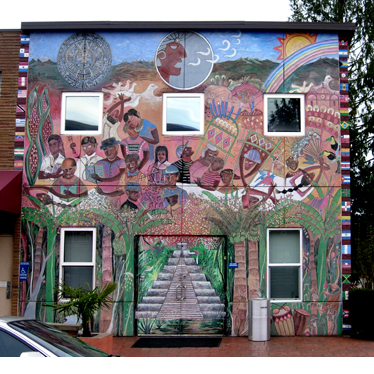

Fulgencio Lazo created a mural at Consejo in Seattle with imagery to express that all Latin American peoples are welcome and a rainbow to signal friendliness to the LGBTQ population.
Access to nature promotes well-being.
Outdoor space offers opportunities for reflection, connection with children, privacy and healthy activity. Research has shown that nature, including the feeling of sunshine and access to views of trees, etc., can provide healing effects on those recovering from trauma. (Cooper Marcus, Claire and M. Barnes. Healing Gardens: Therapeutic Benefits and Design Recommendations, New York: John Wiley & Sons, 1999.)
Outdoor space offers opportunities for reflection, connection with children, privacy and healthy activity. Research has shown that nature, including the feeling of sunshine and access to views of trees, etc., can provide healing effects on those recovering from trauma. (Cooper Marcus, Claire and M. Barnes. Healing Gardens: Therapeutic Benefits and Design Recommendations, New York: John Wiley & Sons, 1999.)
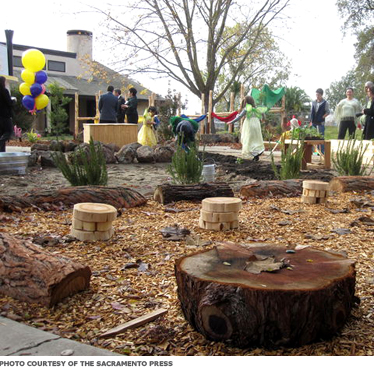
![Outdoor Areas Help Recovery 95%: The percentage of shelters state that a calming outdoor area would help their clients’ recovery process. [“Mary Kay Truth About Abuse” Survey, National Findings from Third Survey of Domestic Violence Shelters in the United States, Released April 2011]](https://www.buildingdignity.wscadv.org/wp-content/uploads/2012/02/Outdoor-Areas-Help-Recovery1.bmp)
Gardens can offer solace.
Healing gardens can facilitate art therapy sessions, exterior group work sessions, and the option to garden. Gardens also offer a point of connection with other community programs, such as those aimed at environmental education.
At the same time the garden wall can create a protected outdoor play space for children.
Healing gardens can facilitate art therapy sessions, exterior group work sessions, and the option to garden. Gardens also offer a point of connection with other community programs, such as those aimed at environmental education.
At the same time the garden wall can create a protected outdoor play space for children.
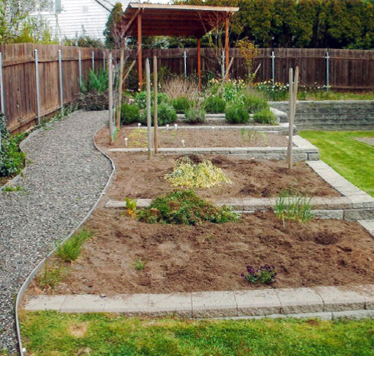
![The Healing Begins A young girl learning to water and care for a small plant is also learning to care for herself. A little boy watching a resident killdeer protect her nest begins to explore family dynamics. These lessons open the children’s minds and hearts, and the healing begins.” [Shauna Bigelow, Shelter Children’s Counselor at Family Shelter Services in Downers Grove, IL]](https://www.buildingdignity.wscadv.org/wp-content/uploads/2012/02/The-Healing-Begins1.bmp)

Community participation made Womencare’s “Serenity Corner” possible. The landscaping and plants were donated; the Men Against Violence group from Western Washington University built a pagoda to shelter a seating area, and a volunteer landscaper tended this plot for several years. The garden provides a quiet place for residents to retreat from the hubbub of a communal shelter, as well as herbs and vegetables for meals.
Accommodate service animals.
Service animals make mobility and independence possible for some survivors. A service animal can be integral to accessing help, staying safe and getting through the day. Service animals are any animal that has been individually trained to provide a particular service to a person with a physical, sensory, or mental disability. Advocates can learn more about service animals in domestic violence programs here or by searching “service animal” on WSCADV’s website. There you will find articles on serving people with disabilities and service animals, model protocols, and other resources.
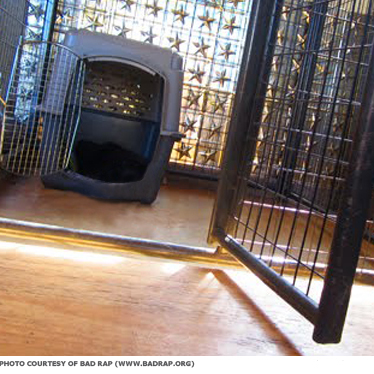
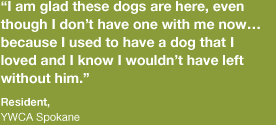
Consider indoor and outdoor space for pets.
Leaving home without a beloved and vulnerable pet is not an option for many domestic violence survivors. Leaving behind a pet, knowing it may be abused by the batterer can compound trauma for children and adults. Increasingly, domestic violence programs are making space for pets and this has been overwhelmingly positive.
Heated kennels with outdoor access allow dogs comfort in both cold winters and hot summers; when their owner’s are home, dogs can be in the shelter on a leash.
Leaving home without a beloved and vulnerable pet is not an option for many domestic violence survivors. Leaving behind a pet, knowing it may be abused by the batterer can compound trauma for children and adults. Increasingly, domestic violence programs are making space for pets and this has been overwhelmingly positive.
Heated kennels with outdoor access allow dogs comfort in both cold winters and hot summers; when their owner’s are home, dogs can be in the shelter on a leash.
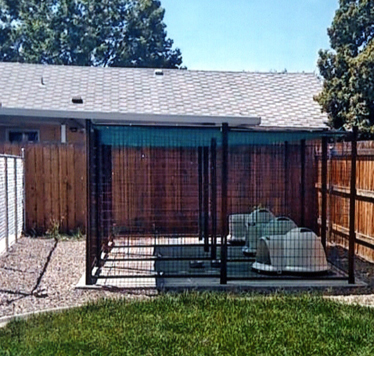

Dog runs adjacent to main living spaces allow easy access at the Domestic Violence Services Benton & Franklin Counties. Dogs are allowed inside when their owners are home.
Consider the weather and climate when planning your site.
Locating windows, shade trees and areas of glass with respect to the local climate to avoid glare and overheating will ensure that energy bills are kept low and residents kept comfortable. Good daylighting design also leads to lower energy use and a more positive environment. Providing ceiling fans and windows that open contribute both to residents’ comfort and to their feeling of control over their own space.
Place outdoor play areas so they will receive optimal light given the climate most of the day.
Shelter entries can be protected from snow, rain and winds by locating them carefully and creating cover overhead. In some cases, the direction that the entry to the building faces may have cultural implications (such as feng shui, location of the rising sun, or orientation to mecca).
Locating windows, shade trees and areas of glass with respect to the local climate to avoid glare and overheating will ensure that energy bills are kept low and residents kept comfortable. Good daylighting design also leads to lower energy use and a more positive environment. Providing ceiling fans and windows that open contribute both to residents’ comfort and to their feeling of control over their own space.
Place outdoor play areas so they will receive optimal light given the climate most of the day.
Shelter entries can be protected from snow, rain and winds by locating them carefully and creating cover overhead. In some cases, the direction that the entry to the building faces may have cultural implications (such as feng shui, location of the rising sun, or orientation to mecca).
